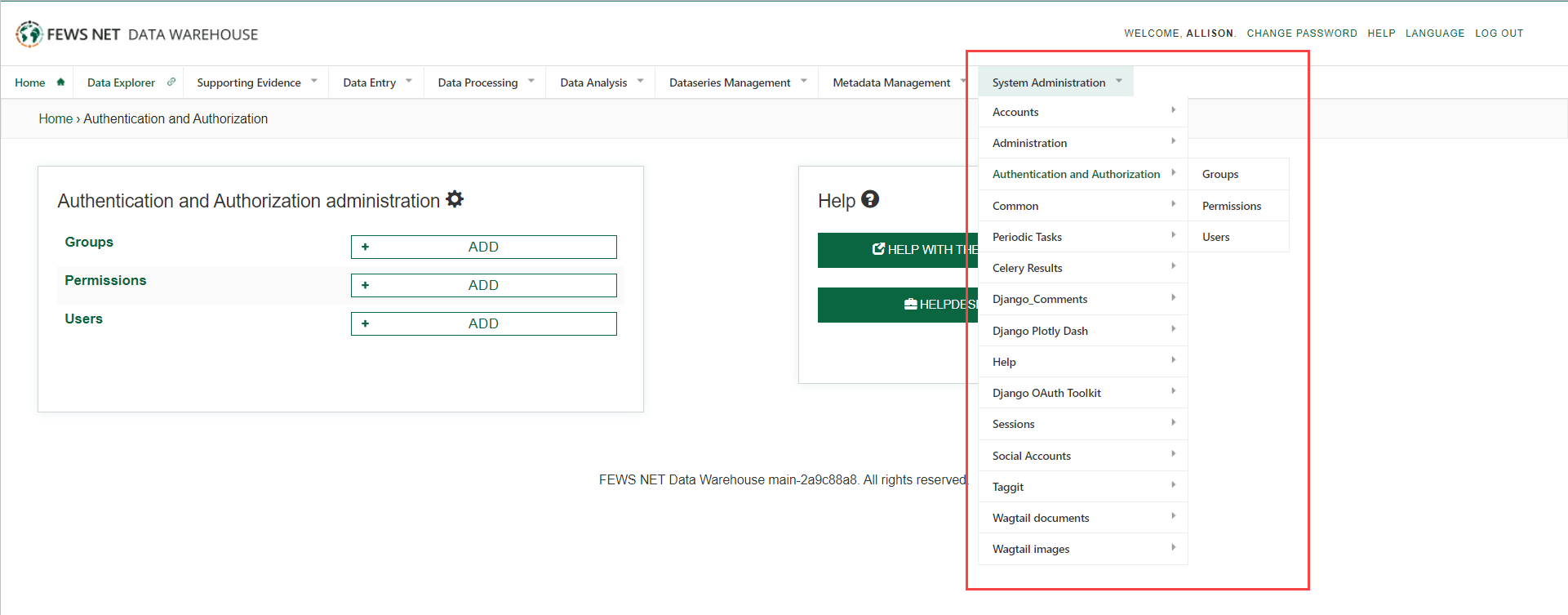The majority of user and user group administration tasks can be performed by going to System Administration > Authentication and Authorization.

Groups
The Groups page allows system administrators to create a new group, add additional members, and assign unique permissions to the group.
All members of the group will inherit all the permissions that have been granted to the group.
A user can be a member of multiple groups and will have all the permissions that have been granted to all the groups they belong to.
It is also possible to edit an existing group attribute such as its name, its permissions and members from this page. Deleting a group is also performed from this page.
Permissions
The Permissions page enables administrators to manage the low level permissions in the system that can be granted to users or groups of users. From this page, system administrators can perform the following actions:
-
Add new permission: Add a new permission in the system by specifying a name, the relevant table, and its code name. Typically, each permission stands for one of the four basic operations in a database system: adding a new record, viewing an existing record, updating a record, and deleting an existing record.
-
Edit a permission record
-
Delete a permission record
Users
The Users page allows administrators to manage individual users in the FEWS NET Data Platform system. The actions that can be performed from this page are:
-
Add new users: Introduce a new user into the system by providing the basic user information of username, password, and an email address.
-
Edit users: Modify existing users’ details in the system, including adding first name and last name.
-
Delete users: Delete one or more users from the system.
-
Change user status: Designate a user account as Active or Inactive. Inactive accounts are not able to log into the system.
-
Assign superuser status: Superuser accounts have unlimited access to the system without belonging to any permissions groups.
-
Manage users groups: Manage the groups that an individual user is part of.
-
Add/Edit permissions: Add permissions at the user level.
Adding individual permissions to individual users is not an efficient way of managing permissions and should be used sparingly and only under rare circumstances.
-
Search users: Search users using a free text search criteria.
-
Filter users: Filter users by staff status, superuser status, active or inactive, and groups.
-
Reset password: Reset user passwords.
